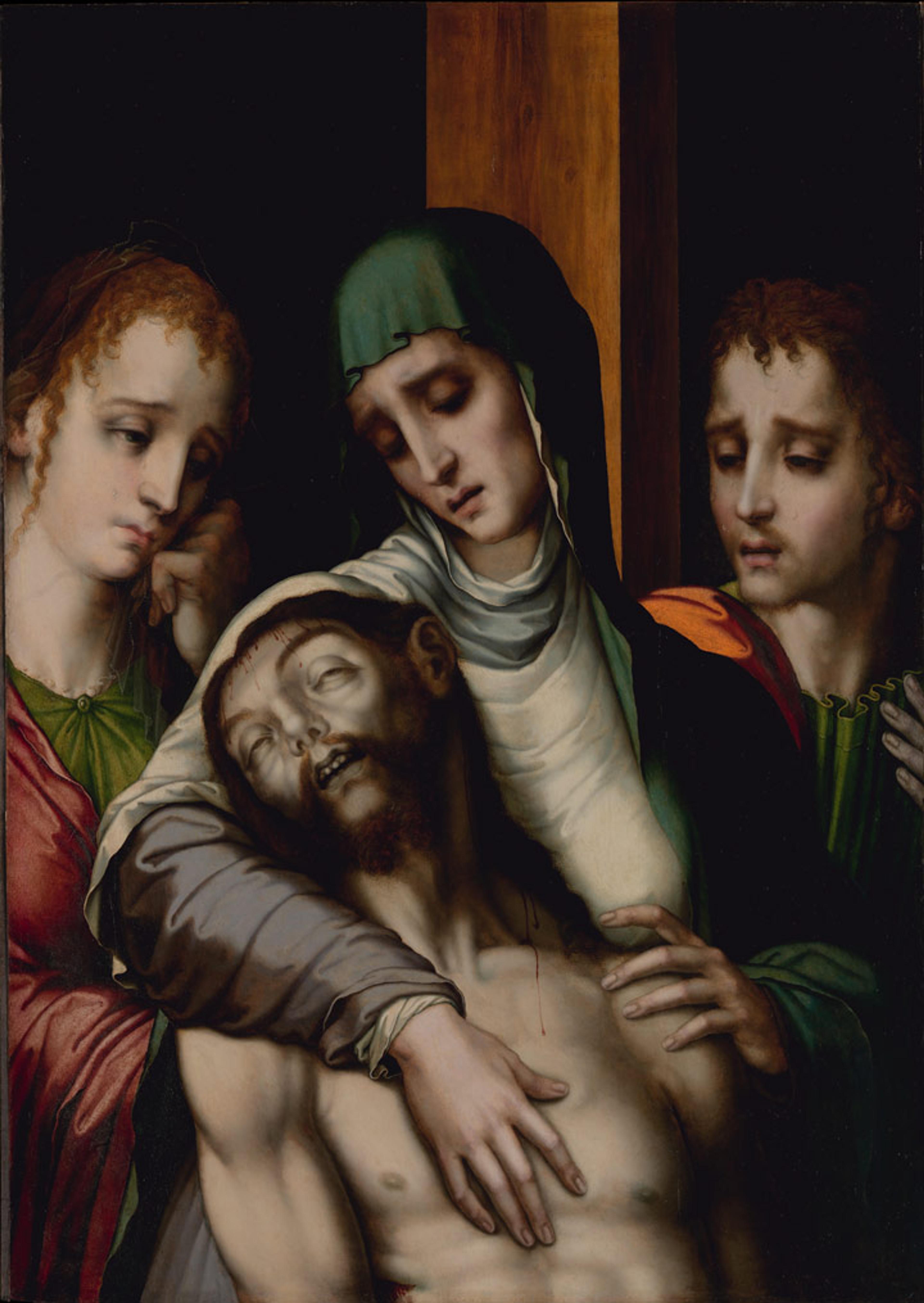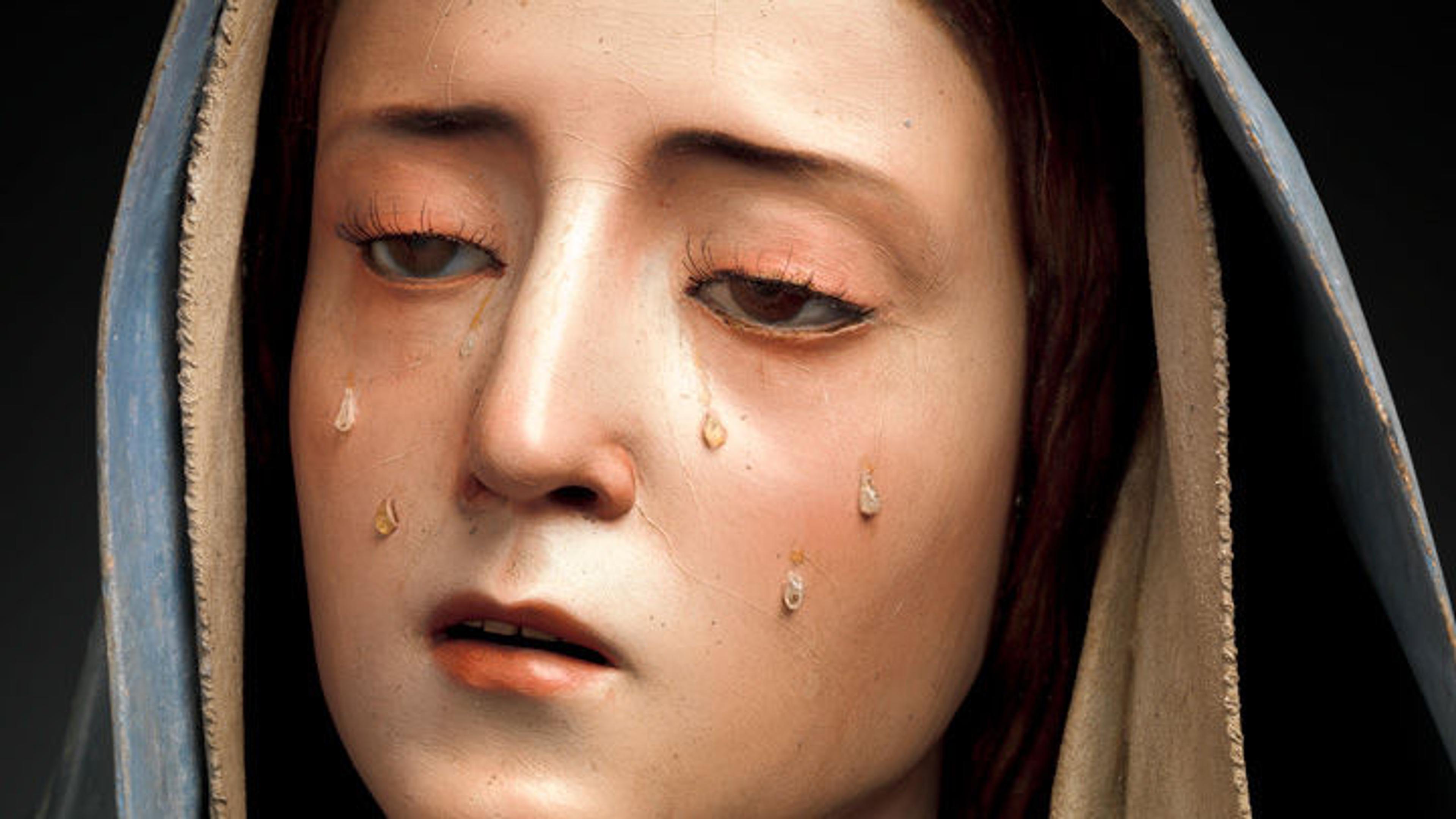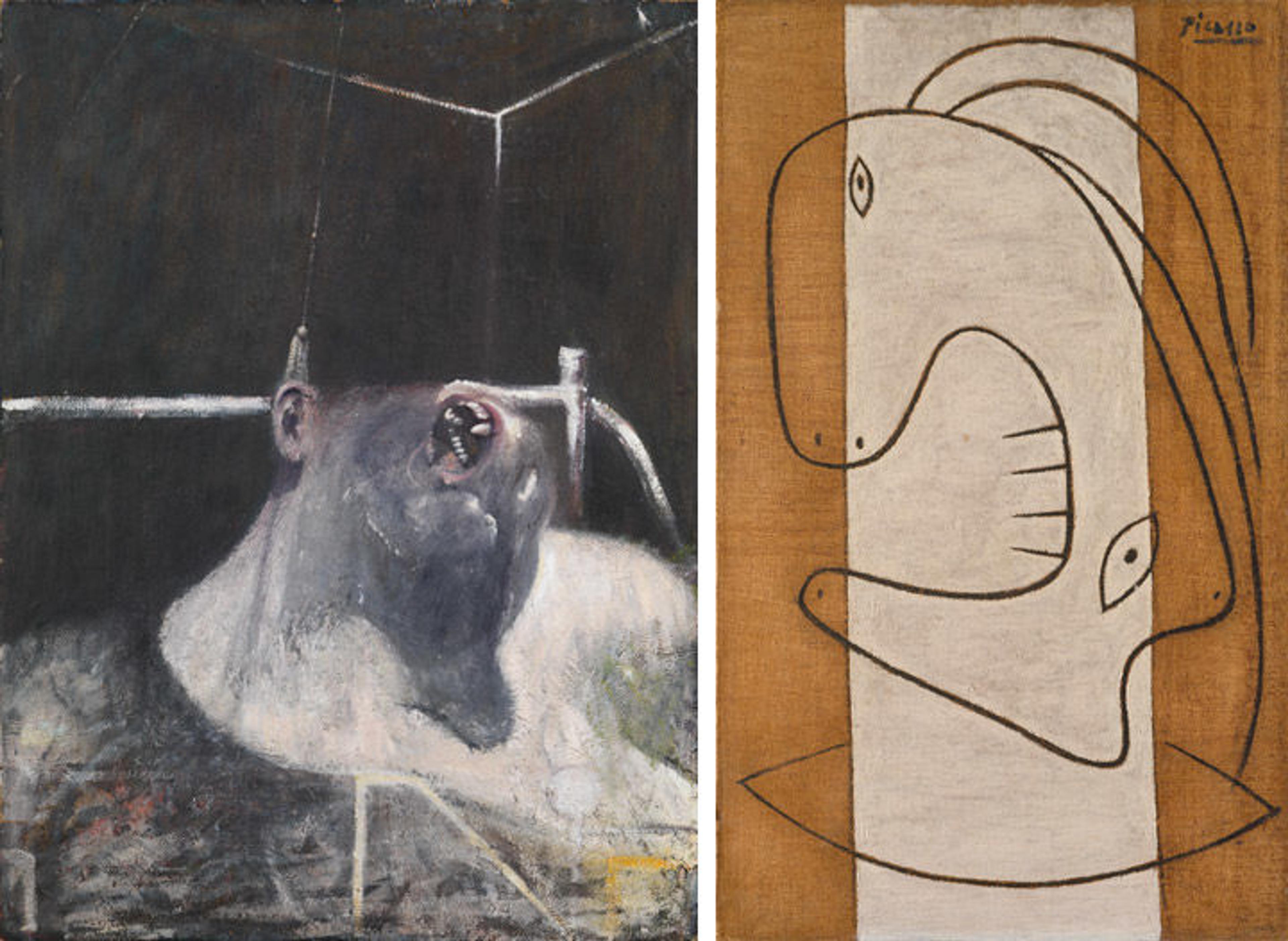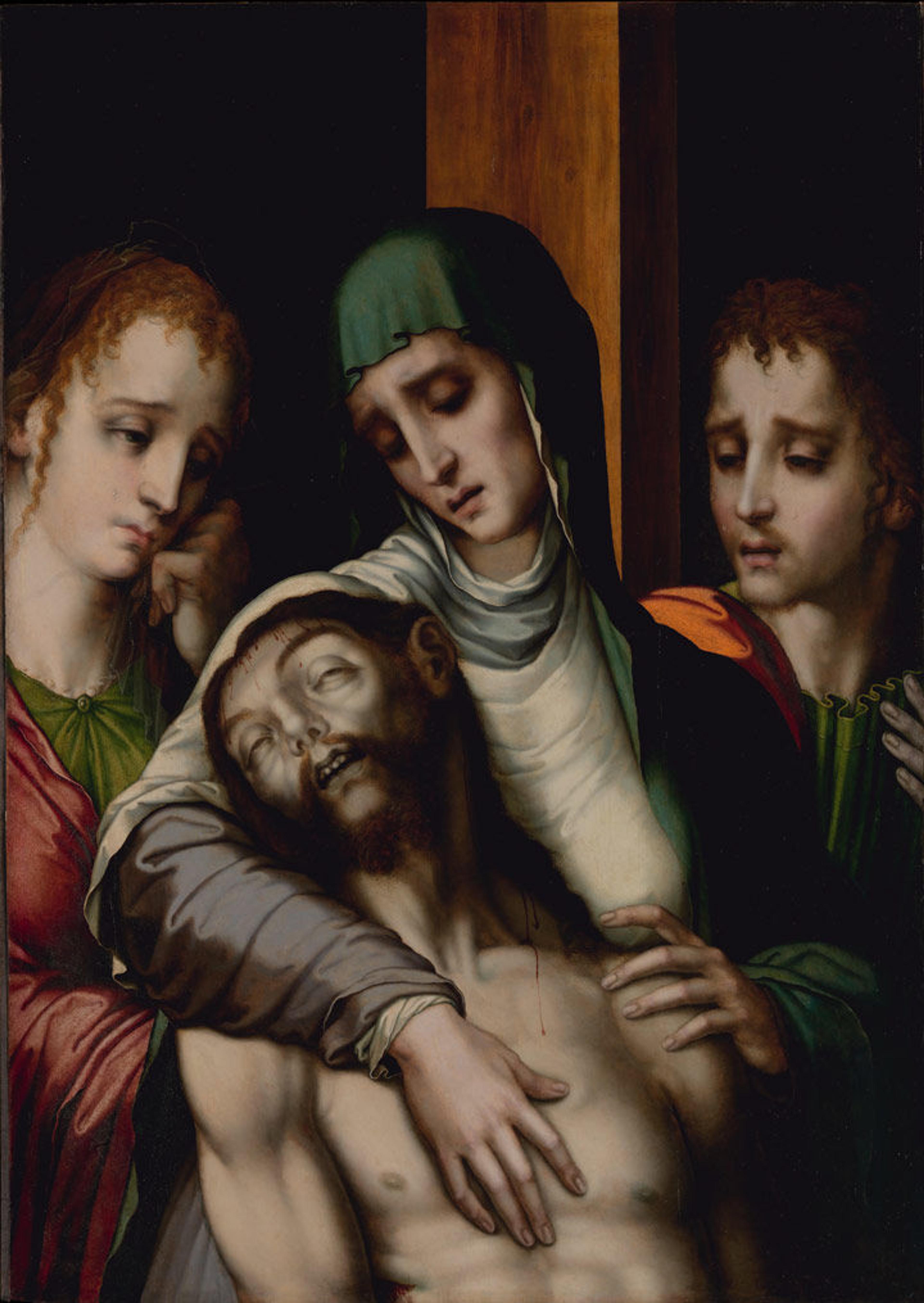
Luis de Morales (Spanish, 1510/11–1586). The Lamentation, ca. 1560. Oil on walnut, 35 x 24 5/8 in. (89 x 62.5 cm). The Metropolitan Museum of Art, New York, Purchase, Alejandro Santo Domingo and Annette de la Renta Gifts; Bequests of George D. Pratt and of Annette B. McFadden, and Gifts of Estate of George Quackenbush, in his memory, of Dr. and Mrs. Max A. Goldzieher, of Francis Neilson, of Dr. Foo Chu and Dr. Marguerite Hainje-Chu, of Mr. and Mrs. Harold H. Burns, and of Mr. and Mrs. Joshua Logan, and other gifts and bequests, by exchange; Victor Wilbour Fund; and Hester Diamond Gift, 2015 (2015.398)
«For visitors who expect Renaissance art to conform to certain standards of ideal beauty, Luis de Morales's painting of the Lamentation—in which the Virgin cradles the dead body of her son in her arms, while Mary Magdalene and Saint John the Evangelist look on tearfully—can be deeply disconcerting. In this scene, on view through March 24 in European Paintings: Recent Acquisitions 2015–16, Christ's head is thrown back in an ungainly fashion, and we see his jagged teeth as his jaw hangs open. The skin of all four figures has a terrible pallor, and the palette, while memorable, is unnatural and icy. The cross itself dominates the center of the composition, and there is no softening landscape behind; indeed, the background is black. At first glance, the painting is mostly disturbing.»
And yet, Morales's contemporaries in Spain called him "El Divino" and were enamored of his difficult yet exquisite religious paintings. For them his work was the visual equivalent of the intensely moving Catholic literature of the day. In both poetry and prose, they expected devotional texts and art to make them feel the pathos of their religion, which included death and loss.
There is a remarkable coincidence between the words used to describe these dramatic sacred events and the images used to depict them, as when one famous set of "meditations" urged the reader to envision the Virgin as clasping "the lacerated body [of Christ] to her breast" as her tears bathe him. [1] Rarely have tears played such a role in painting as here, in which they stream down the cheeks of both Mary Magdalene and Saint John. The importance of tears as a spiritual, purifying gift would take physical form in the next century in the work of great Spanish sculptors such as Pedro de Mena.

Pedro de Mena (Spanish, 1628–1688). Mater Dolorosa (detail), ca. 1674–85. Partial-gilt polychrome wood, sculpture only, confirmed: 24 13/16 x 23 1/8 x 15 in. (63 x 58.7 x 38.1 cm). The Metropolitan Museum of Art, New York, Purchase, Lila Acheson Wallace Gift, Mary Trumbell Adams Fund, and Gift of Dr. Mortimer D. Sackler, Theresa Sackler and Family, 2014 (2014.275.2)
The delicate beauty of the tears of Morales's saints, as well as their curly hair and melancholy faces, provides a moving counterpoint to the harshness of the scene they are witnessing. We also should be accustomed to art that seeks not for commonplace beauty, but instead for the deeply expressive—and we should be intrigued when we find such expression before the modern era. After all, we stop to admire Francis Bacon's Head I, with its similar emphasis on the jarring depiction of a gaping mouth, and we understand Picasso's even more abstract manipulations of the human form for tough, expressive purposes, such as in Head of a Woman.
In all these cases moving away from a sugarcoated beauty leads to something else: human truths.

Left: Francis Bacon (British [born Ireland], 1909–1992). Head I, 1947–48. Oil and tempera on board, 39 1/2 x 29 1/2 in. (100.3 x 74.9 cm). The Metropolitan Museum of Art, New York, Bequest of Richard S. Zeisler, 2007 (2007.247.1). © 2017 Artists Rights Society (ARS), New York. Right: Pablo Picasso (Spanish, 1881–1973). Head of a Woman, 1927. Oil and charcoal on canvas, 21 3/4 x 13 1/4 in. (55.2 x 33.7 cm). The Metropolitan Museum of Art, New York, Jacques and Natasha Gelman Collection, 1998 (1999.363.66). © 2017 Estate of Pablo Picasso / Artists Rights Society (ARS), New York
Note
Granada, Fray Luis de. "Libro de la oración y meditación" (1586). Quoted in Jonathan Brown, The Golden Age of Painting in Spain. New Haven and London: Yale University Press, 1991.
Related Links
European Paintings: Recent Acquisitions 2015–16, on view at The Met Fifth Avenue through March 26, 2017
Now at The Met: View all blog articles related to this exhibition.
MetCollects—Episode 4 / 2015: "Luke Syson on Pedro de Mena's Polychrome Sculptures"
